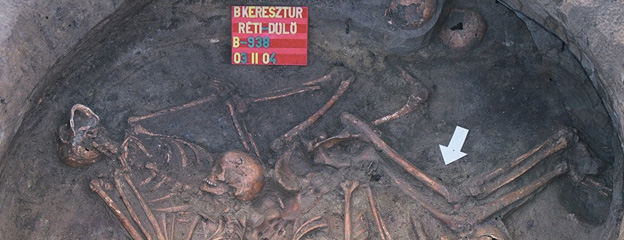Harangedényes konferencia Kielben
2017. május 17 és 21 között kerül megrendezésre a németországi Kielben a harangedényes időszak kutatására specializálódott nemzetközi társaság, az Archéologie et Gobelets XXI. konferenciája, mely az idén a Think Global, Act Local! The Transformation of Spatial Interaction and Material Culture in Beaker Contexts of the 3rd Millennium BC in Europe címet viseli. Az ötnapos esemény a harangedényes időszak kulturális kapcsolatrendszerének globális és lokális aspektusaira, valamint az ezek mögött feltérképezhető társadalmi-gazdasági változásokra fókuszál.
A konferencián kutatócsoportunkat Kulcsár Gabriella képviseli egy olyan előadással, melyben a Kr. e. 3. évezredi távolsági kapcsolatok átrendeződését, a főváros környéki harangedényes ‘populáció’ vándorlásának kérdéseit, valamint budapesti régió kulturális összekötő szerepét vizsgálja majd.
Az előadás angol nyelvű kivonata:
Gabriella Kulcsár – András Czene – Anna Endrődi – Julia Giblin – Tamás Hajdu – Zsolt Kasztovszky – György Káli – Zoltán Kis – Kitti Köhler – Boglárka Maróti – Róbert Patay – Géza Szabó – Vajk Szeverényi – Viktória Kiss
Bell Beaker Budapest – New results of the investigation of Early Bronze Age sites along the Danube in Central Hungary
Our presentation focuses upon Early Bronze Age (2500/2400–2200/2100 BC) sites in central Hungary based on the results of our new research projects granted by the Hungarian Scientific Research Fund (Nr.108597) and by the Hungarian Academy of Sciences (Momentum Mobility program). At the beginning of this period the appearance of the Bell Beaker phenomenon caused considerable changes in certain territories of Europe. The possibility that the Budapest area was a meeting point of the Southeastern European and Central European regions always offered huge research perspectives.
There are many different analytical aspects of the network architecture and the temporal and spatial dynamics of the 3rd millennium BC Carpathian Basin. The main driving force behind the continuity or the changes of connections is the accessibility and the obtainability of different raw materials and other natural resources. The most important evidence for the existence of the geopolitics-based cultural network is the large-scale geographical availability of similar type and style pottery and metal objects. With the analytical extension of the traditional typochronological methodology and with the latest material analysis results we can enrich our knowledge about the 3rd millennium BC interaction zones. Cemeteries of this population with several hundred graves were recently excavated in the Budapest area. Concerning inhumation burials the ongoing stable isotope analyses will provide data for the mobility patterns of the investigated populations.
Our aim is to provide a more detailed chronology, including the scientific dating of cremation burials. We also study other aspects of the cemeteries, e.g. indications of social stratification and the raw material of metal grave goods, tracing the adoption of tin bronze technology in the Hungarian Bronze Age.
A konferencia programja és a további előadások kivonatai elérhetők a Kieli Egyetem honlapján.








